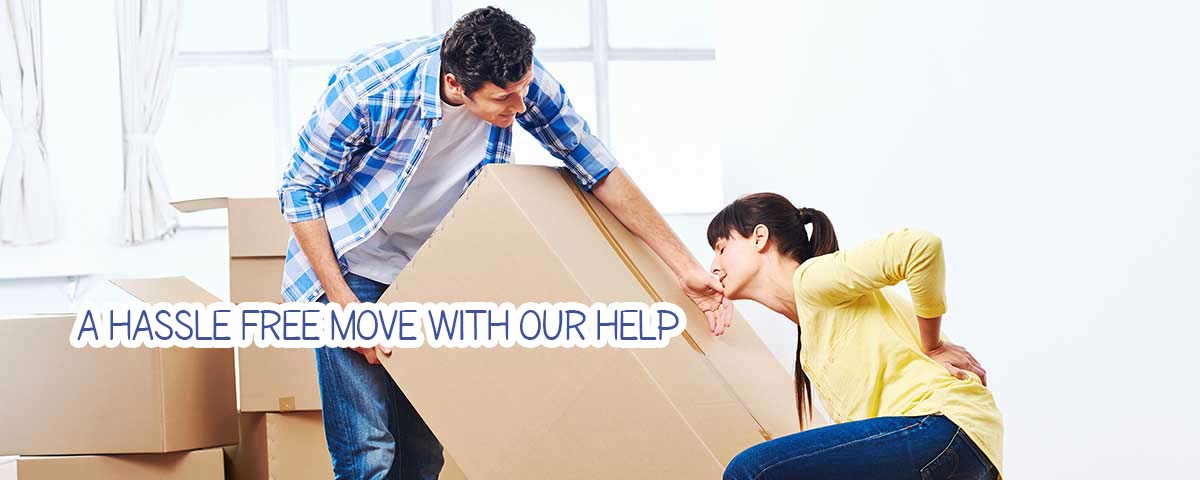How to Relocate Your Bed and Mattress Successfully
Posted on 25/05/2025
How to Relocate Your Bed and Mattress Successfully
Whether you're moving homes, rearranging rooms, or sending your bedroom furniture to storage, relocating your bed and mattress can seem like a daunting task. With the right preparation, tools, and techniques, you can ensure a safe and hassle-free bed and mattress move. In this comprehensive guide, we share expert tips and essential steps to help you relocate your bed and mattress successfully, avoiding common pitfalls and ensuring your sleep setup arrives intact and ready for use.
Why Properly Relocating Your Bed and Mattress Matters
A well-maintained mattress and bed frame are crucial for comfort and health. Incorrect handling during relocation can lead to costly damage, void mattress warranties, or even impact your sleep quality. Understanding how to move your mattress and bed safely protects your investment, prolongs the lifespan of your furniture, and ensures a smoother settling-in process at your new place.

Plan Ahead For Moving Your Bed and Mattress
The Importance of Advance Planning
The foundation of a successful bed and mattress move lies in thorough preparation. Rushed or last-minute moves increase the risk of damage and unnecessary stress. Starting early allows you to gather necessary materials, make logistical arrangements, and anticipate challenges.
- Set a moving date: Choose a date that gives you enough time to handle each step carefully.
- Measure doorways and stairs: Confirm that your bed and mattress can fit through all entrances and tight spaces in both locations.
- Check transport options: Arrange for a vehicle suited to the size of your mattress and bed frame--sometimes, even a disassembled bed needs a large van or truck, especially for king-size beds.
- Enlist help: Plan to have at least one or two strong helpers, or consider hiring professional movers for heavy or specialty beds like murphy beds or adjustable bases.
Gather the Right Tools and Materials
To move your bed and mattress efficiently and safely, collect these essential items:
- Mattress bag or cover: Protects your mattress from dirt, dust, and moisture. These are available in most home improvement stores or online.
- Furniture sliders: Help move heavy bed frames across floors without causing scratches or damage.
- Wrenches/screwdrivers: For disassembling and reassembling the bed frame.
- Tape and zip bags: Use for storing screws and small components securely.
- Moving straps or ropes: These aid in maneuvering the mattress and frame, especially in tight spaces.
- Bubble wrap or moving blankets: For covering sharp edges or delicate components, such as headboards or bed slats.
- Markers and labels: Labels help keep track of all the pieces during reassembly.
Having these supplies ready in advance can make your bed and mattress relocation more efficient and safe.
Disassembling Your Bed Frame: Step-by-Step
1. Clear the Area and Strip the Bed
Start by removing all bedding: *sheets, comforters, pillows,* and mattress protectors. This ensures nothing gets lost and you can work unhindered. Pack bedding in separate, clean bags or boxes.
2. Disassemble Carefully
Manufacturers' instructions are invaluable when disassembling your bed. If you no longer have the manual, try finding it online using your bed's make and model.
- Remove the mattress and box spring: Place them in their protective bags.
- Detach the headboard and footboard: Use the suitable tools and keep all bolts in labeled bags for each bedpart.
- Dismantle side rails and slats: Carefully remove these components, cushioning any fragile or ornate pieces.
Pro Tip: Take photos during disassembly to aid in reassembly at your new location.
Packing and Protecting Your Mattress
Why a Mattress Bag is Essential
Mattress bags are specifically designed to keep moisture, insects, and debris away from your mattress during transit. It also prevents tears or fabric stains.
- Slide the mattress into the bag: This usually requires two people for larger mattresses.
- Seal all openings with packing tape: Ensure no part of the mattress is exposed.
- Label the bag: Especially helpful if you are moving multiple mattresses.
This step ensures that you relocate your mattress safely and hygienically.
Transporting Your Bed Frame and Mattress
Load Your Items with Care
- Use a dolly for heavier items: This reduces the risk of injury and minimizes effort.
- Place the mattress against a wall: In the moving vehicle, place your mattress flat or upright against a wall, depending on the manufacturer's recommendations.
- Secure with ropes: Prevent the mattress from shifting during transit with moving straps or ropes.
- Protect bed frame components: Use blankets or bubble wrap to prevent scratches or dents. Lay longer pieces flat and stack lighter, smaller pieces on top.
- Double-check for screws and pieces: Before closing up the vehicle, ensure all bags of hardware and smaller components are accounted for.
Transport Considerations
When making decisions about transportation for your mattress and bed:
- Never tie a mattress to the roof of a car. This is dangerous, often illegal, and can damage the mattress beyond repair.
- Try to keep the mattress flat. If your space only allows it to be on its side, be sure not to bend or fold the mattress, especially if it's a traditional innerspring or hybrid type.
Moving Special Mattress Types
Memory Foam and Latex Mattresses
These mattresses are heavier and more flexible. Memory foam should never be folded excessively, as this may cause lasting damage. Always use a *stiff board* or keep the mattress lying flat during transit. Use extra protection to avoid punctures.
Innerspring Mattresses
These are sturdier but can be prone to bending, which will ruin their springs. Keep upright for short transport; otherwise, lay it flat.
Hybrid Mattresses
With a mix of foam and coils, hybrids should be moved with extra care--never bend or fold. Securely wrap and transport flat if possible.
Adjustable and Specialty Beds
For adjustable bases, disconnect all electronic parts. Wrap wiring separately and keep remotes in a secure, labeled container.
Arriving at Your New Location
Reassembly Essentials
Once at your destination, move all components to the intended room before starting reassembly.
- Consult photos and labels: Use the images and labeled bags from disassembly for smooth, error-free rebuilding.
- Tighten all bolts and screws securely: A wobbly bed can disturb sleep and may be unsafe.
- Inspect for damage: Check for lost or damaged pieces before bedding down for the first night.
Mattress Recovery Time
After transit, mattresses--especially memory foam or hybrids--may need a few hours to regain their shape. Let it air out before remaking your bed to dissipate any odors trapped in the bag.
Tips for Storing Beds and Mattresses Long-Term
- Store flat whenever possible: Long-term vertical storage can cause warping.
- Choose climate-controlled units: Excess humidity or temperature swings can damage textiles and materials.
- Use protective covers: Always keep items in mattress bags or sheets during storage.
Common Mistakes to Avoid When Relocating Your Bed and Mattress
- Not measuring doorways: This can lead to frustration and possible damage to walls or the bed frame itself.
- Forgetting hardware: Losing screws means a frustrating reassembly and possibly an unstable bed.
- Neglecting to use a mattress cover: This leaves your mattress exposed to dirt, spills, and tears.
- Transporting improperly: Folding or tying down mattresses incorrectly can void warranties and cause permanent damage.
Expert Advice: When to Hire Professional Movers
For intricate bed frames, king-sized mattresses, or when moving multiple flights of stairs, professional movers are often the safest bet. They have the experience, equipment, and insurance to guarantee a successful bed and mattress move. Look for movers with positive reviews and specific experience in bed and mattress relocation.

Frequently Asked Questions About Relocating Your Bed and Mattress
How can I relocate a bed and mattress by myself?
If you're handling the move alone, lighten your load: disassemble everything and make multiple trips, using the right moving tools. However, for safety, always seek help for heavy lifting.
What's the best way to move a memory foam mattress?
Keep the mattress flat, use a sturdy mattress bag, and never fold or roll tightly, as this can damage the foam structure.
Does moving void my mattress warranty?
Improper handling--such as folding, bending, or tears--often voids warranties. Follow the manufacturer's instructions for moving your mattress.
How should I clean my mattress before moving?
Vacuum your mattress thoroughly and spot-clean any stains with mild detergent. Ensure the mattress is completely dry before bagging to prevent mold or odor buildup during transport or storage.
Conclusion: Move Your Bed and Mattress With Confidence
Relocating your bed and mattress doesn't have to be stressful. By following expert advice and these step-by-step mattress and bed relocation tips, you safeguard your valuable sleep investment while enjoying a smooth transition to your new home or arrangement. Remember to plan ahead, gather the right supplies, disassemble carefully, protect your mattress during transit, and follow reassembly best practices. With attention to detail and preparation, you'll sleep well in your new space--knowing your bed and mattress made the journey unscathed.
Looking for more helpful moving tips? Browse our blog for expert guides on all aspects of a successful, stress-free move!



